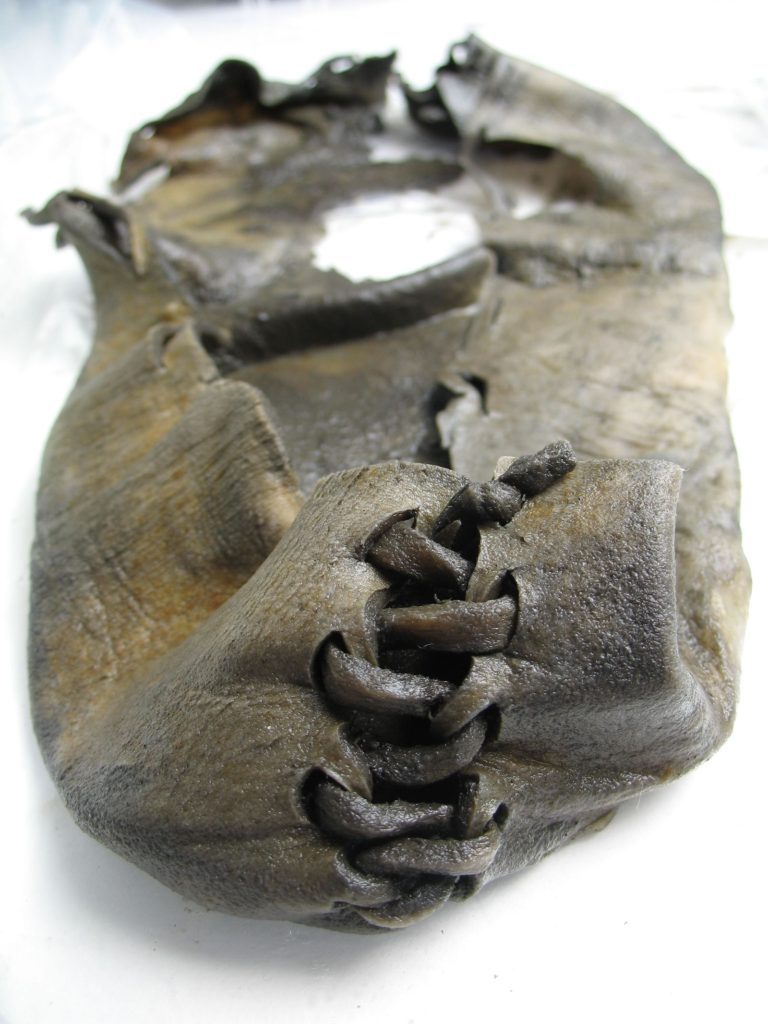In September 2006, an unexpected discovery on the Langfonne ice patch in Norway reshaped the field of glacial archaeology. Reidar, an avid explorer, unearthed an ancient shoe made of rawhide, which radiocarbon dating later confirmed to be over 3,300 years old, dating back to 1,300 BC during the Early Bronze Age. This remarkable find not only stunned the archaeological community but also uncovered the remarkable preservation potential of glaciers at high altitudes, which serve as time capsules for ancient relics.
Table of Contents
ToggleA Glimpse into the Past: The Discovery of the Rawhide Shoe
Reidar’s discovery was much more than just a piece of ancient footwear; it marked a significant milestone in the study of prehistoric life in the Nordic region. The rawhide shoe, perfectly preserved in the ice, provided a rare glimpse into the daily lives of the people who lived during the Early Bronze Age. At the time of its discovery, it was unlike any artifact found before, signaling the start of a new wave of archaeological exploration at high-altitude sites, particularly those located in Norway’s Innlandet County.

The shoe itself, though simple in design, was a vital clue in unraveling the mysteries of the past. Its preservation allowed researchers to study the materials used in its creation, shedding light on the technological skills of Bronze Age people. Additionally, the shoe added a new layer of understanding regarding the climate and environmental conditions of the period, showing how early humans adapted to their surroundings with practical and durable solutions.
The Impact of Glacial Archaeology: Unveiling a Hidden History
The shoe discovery sparked a series of finds at the Langfonne ice patch and other glacial sites in the region. Over the following years, a range of prehistoric objects began to emerge from the ice—tools, weapons, clothing, and even remnants of ancient food storage methods. These artifacts, preserved for thousands of years, provided invaluable insight into the lifestyles, habits, and technologies of people who lived long before written records existed.
The findings from these high-altitude ice patches, often referred to as “glacial treasures,” have proven essential in understanding how early humans navigated harsh environments. These artifacts not only reveal the material culture of ancient civilizations but also offer a direct link to the past, enabling researchers to study human behavior, trade practices, and even social structures.
Climate Change and the Importance of Glacial Archaeology
The significance of glacial archaeology is underscored by the ongoing effects of climate change. As the planet warms, glaciers are retreating, exposing more and more artifacts that were once trapped under ice. While the rapid melting of glaciers is concerning for environmental reasons, it has opened a unique window into the distant past. Archaeologists are racing against time to document and study these finds before they are lost to the elements.

Reidar’s find serves as a powerful reminder of how climate change, while threatening modern ecosystems, can also inadvertently uncover hidden histories. The melting ice patches have not only revealed prehistoric items but also demonstrated the power of nature to preserve ancient relics for thousands of years.
The Legacy of Reidar’s Discovery
Reidar’s perseverance in searching the Langfonne ice patch has become symbolic of the broader efforts in glacial archaeology. His discovery of the rawhide shoe ignited a wave of interest in exploring ice patches, particularly in Norway, where the cold and dry conditions create an almost ideal environment for preserving ancient artifacts. The shoe was just the beginning—what followed were numerous finds that collectively contributed to our understanding of the past in unprecedented ways.
Reidar’s find is a perfect example of how modern science and exploration continue to reveal new chapters of human history. These discoveries are not just about the objects themselves, but about the stories they tell. Each artifact, whether a shoe, a tool, or a weapon, represents a moment in time that allows us to piece together the lives of those who came before us.
Conclusion: Glacial Archaeology’s Bright Future
As more finds are made and techniques improve, glacial archaeology promises to unlock further secrets of the past. Reidar’s discovery of the rawhide shoe was not merely an archaeological triumph; it was the spark that ignited a new era in the study of ancient human life. With glaciers continuing to reveal their ancient treasures, the future of glacial archaeology looks bright, offering a rare and invaluable opportunity to peer into the lives of our distant ancestors. As we continue to explore the high-altitude ice patches, who knows what other treasures may be waiting to be uncovered, revealing even more about the fascinating world of prehistoric humanity.

